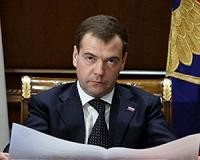 |
London (UPI) May 12, 2010 The European Commission is ready to boost its bloc-wide climate emissions reduction target to revive the deadlocked climate negotiations and drive the price for carbon certificates. European Climate Commissioner Connie Hedegaard is destined to boost Europe's climate protection efforts. "Europe risks being left behind," she said at a lecture in London organized by the International Institute for Environment and Development, BBC News reports. Because of the global economic downturn, the EU needs to spend one-third of the costs originally envisaged to achieve its target of cutting carbon dioxide emissions by 20 percent until 2020 based on 1990 levels. For an extra $13.9 billion "the EU can now make a 30 percent CO2 cut," she said. Her directorate will look into the costs and benefits of such a boosted target, the results of which will be unveiled at the end of this month. Hedegaard, who was in charge of the Copenhagen climate summit, said the stricter cuts are needed to revive the deadlocked climate negotiations and drive up the price for carbon -- currently at less than $19 per ton. "With business as usual and the 20 percent target we will not see a substantially higher price of carbon. That is a challenge because we need innovation," she was quoted as saying by British newspaper The Guardian. "Around $38 people would start to do things differently." Several EU member states and most large companies in Europe are against moving to a 30 percent target if other big emitters don't follow suit. Hedegaard, a former Danish climate minister, said she was especially disappointed by the U.S. Senate's delay in passing an energy and climate bill. "The United States needs to bring in the law," she said. That would inject new hope into the deadlocked climate negotiations, to be continued this summer in Bonn, Germany, and at a major summit toward the end of the year in Cancun, Mexico. Indian, Chinese and European officials during the past weeks said hopes for a comprehensive climate treaty to emerge from Cancun are virtually zero. Industrialized and developing nations are still at odds over how to limit the global temperature rise to no more than 3.6 degrees Fahrenheit. A rise beyond that limit would result in potentially catastrophic consequences for humanity, with meteorological disasters increasing, scientists say. At last year's U.N. climate summit in Copenhagen, leaders couldn't agree on concrete emissions reduction targets or a way to measure them. They also failed to come up with a system of funding from rich to poor nations to help them cope with climate change. The summit merely culminated in the publication of the so-called Copenhagen Accord, a weak declaration agreed between the United States, China, Brazil and South Africa after larger negotiations had broken down. The accord wasn't adopted but merely noted by countries, many of which denounced it. Developing nations have resisted a legally binding treaty because they feel rich nations that have benefited from emitting during the past decades should shoulder more of the burden. Industrialized countries argue the developing nations need to commit to concrete reduction targets to enable a global effort. China recently overtook the United States as the world's biggest emitter of heat-trapping greenhouse gases but still emits far less on a per capita basis.
Share This Article With Planet Earth
Related Links
 Medvedev visits Turkey, with focus on energy
Medvedev visits Turkey, with focus on energyAnkara (AFP) May 11, 2010 Russian President Dmitry Medvedev arrived here Tuesday for a two-day visit, expected to focus on energy cooperation, including a plan to build Turkey's first nuclear power plant. Flying in from Syria, Medvedev was to meet Wednesday with Turkish President Abdullah Gul and co-chair with Prime Minister Recep Tayyip Erdogan the first meeting of a recently agreed "high-level cooperation council" ... read more |
|
| The content herein, unless otherwise known to be public domain, are Copyright 1995-2010 - SpaceDaily. AFP and UPI Wire Stories are copyright Agence France-Presse and United Press International. ESA Portal Reports are copyright European Space Agency. All NASA sourced material is public domain. Additional copyrights may apply in whole or part to other bona fide parties. Advertising does not imply endorsement,agreement or approval of any opinions, statements or information provided by SpaceDaily on any Web page published or hosted by SpaceDaily. Privacy Statement |